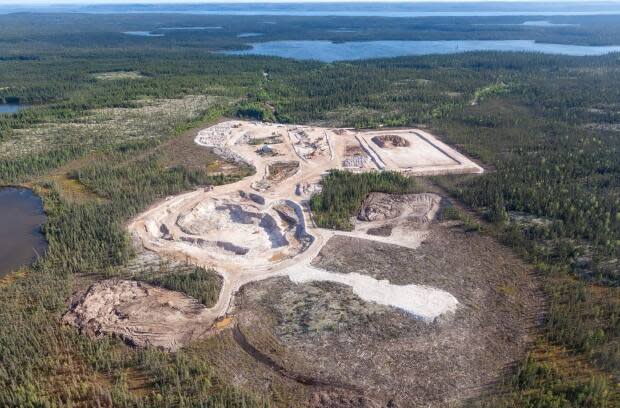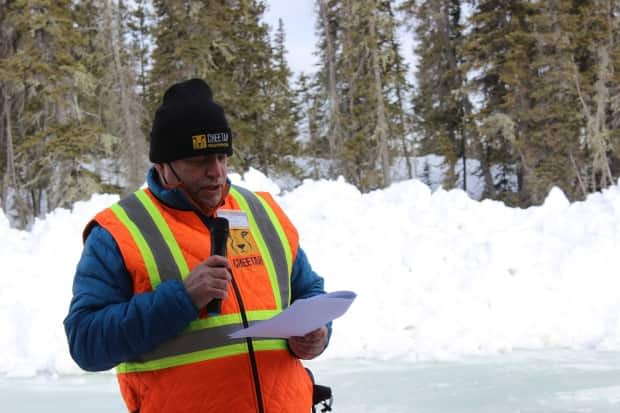Rare earth metal mine in N.W.T. now the main focus for Vital Metals

After a successful year of hauling rare earth metals out of a mine near Yellowknife, Vital Metals says the mine will have its full attention in the new year.
The Nechalacho mine site, about 100 kilometres southeast of Yellowknife, has large deposits of valuable metals used in a multitude of modern tech: wind turbines, aircraft engines, batteries and more.
So far, Vital Metals and its subsidiary, Cheetah Resources, have been mining what's called the North T Zone deposit. That's a smaller pile of metals that the companies are using to demonstrate what's possible at Nechalacho. The main deposit, called the Tardiff deposit, is about 94 times its size — and that's the one Vital Metals is now setting its sights on.
David Connelly, the vice-president of strategy and corporate affairs for Vital Metals and Cheetah Resources, said they'll be doing drilling in the coming year to increase their confidence in the resource.
He couldn't say exactly when they'll start hauling metals out of the ground — they've got permits to apply for and studies to do before they can really dig in at Tardiff.
"We have a target date, but of course it all depends on permitting," he said.

Starting early in the new year, Vital Metals plans to apply for a permit extension for the North T Zone, where it would continue production while ramping up work on Tardiff. Connelly said that will add a couple years to the North T Zone's life.
"The North T deposit will have a short life ... whereas the Tardiff deposit would be multi-generational," he said.
Mine could create hundreds of jobs
As it stands, between 15 and 58 people work at Nechalacho, depending on the season. Most of those are N.W.T. residents, Connelly said, and a majority are Indigenous northerners.
There are still a lot of steps before Vital Metals can start production at Tardiff, but if everything goes according to plan, the mine expects to employ up to 250 people year-round and put the N.W.T. on the map as a global producer of rare earth metals.
Connelly said Nechalacho isn't as big as a diamond mine, so it won't make up for all the jobs the territory expects to lose when the Diavik, Gahcho Kué and Ekati mines close.
"These small, specialty metal projects are much smaller-scale, so unfortunately it won't replace all those jobs. But still, 250 is meaningful," he said.
If Tardiff lives up to their expectations, Connelly said, it could become a "world-class supplier" of resources needed for green and digital technology.
Right now, China is the world's largest producer of rare earth elements. According to Natural Resources Canada, China produces about 60 per cent of the world's supply, or 140,000 tonnes a year. When that's narrowed down to heavy rare earth elements, China produces almost all of it.
In a news release last week, Vital Metals said the Tardiff deposit "has the potential to anchor what we believe will ultimately be a globally significant producer of rare earth minerals."

Production facility delayed
That news release noted that Vital Metals' focus on Nechalacho comes at the same time that the completion of its rare-earth processing facility in Saskatoon is delayed.
The full cost of that facility is now pegged at about $60.5 million, instead of the $20 million it had originally been expected to cost.
In September, Vital Metals held an official unveiling of the facility while it was still under construction.
Connelly said supply chain issues contributed to the facility's higher cost. Vital Metals also changed the scope and design of the facility, and decided to double the facility's output of some magnetic rare earth metals — particularly neodymium and praseodymium, known as NdPr, which the Nechalacho site produces.
He said they're making the best of the delay and using it as an opportunity to produce a mixed rare earth oxide, something that diversifies their product base and also brings in new customers.


